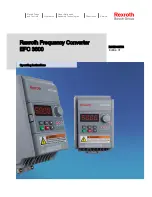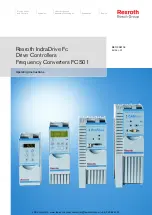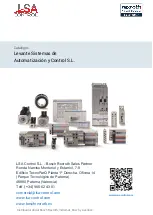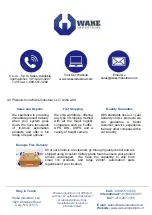
7
L
R
Fastening bores
Timing Belt clamping device
Timing-Belt Drive KRF 8 40 Drive Side
R
: right, Art. No. 0.0.646.92
L
: left, Art. No. 0.0.638.97
S
: synchronous, Art. No. 0.0.629.51
The Timing Belt running through the profile
Reverse Unit cover
3. The Reverse Units:
▪
The Reverse Unit housings are made from a high-strength aluminium alloy.
▪
The Reverse Units are supplied as preassembled construction kits.
▪
Before you can fasten the Reverse Units to the threads that you cut into
the core bores of the profile, you will need to remove the covers from the
Reverse Units.
▪
Do not disassemble the Reverse Units any further – fix them to the profile
using the built-in fastening screws, which are accessed via an upper bore
hole located in each axle and the lower assembly keyholes.
▪
In the Reverse Unit with integrated Timing Belt tensioning device, the lower
fastening screw is accessed through the keyhole in the tensioning screw.
▪
Fastening screws M8, tightening torque: 25 Nm.
▪
5 A/F Allen key.
▪
The tensioning axle in the Reverse Unit has an adjustment range of 18 mm
(= 36 mm elongation in the Timing Belt)
▪
The current setting of the Reverse Unit is indicated via a gauge on the side
of the unit.
Caution
: Ensure the Reverse Units are positioned correctly.
▪
There is
one
Reverse Unit for tensioning the Timing Belt
▪
There are
three
Reverse Units for driving the axis
- Drive side on right
- Drive side on left
- Drive side on both sides, synchronous
The position of the drive shaft is different on each of these Reverse Units and
must be specified during project engineering.
4. The Timing Belt:
▪
Timing Belt length: L
Z
= 2 x L
Profile
+ 190
▪
Timing Belt pretension: max 1‰
▪
Special Timing Belt:
• To enable higher speeds
• Quiet and smooth running
• To minimise any polygon effect
▪
The clamping mechanism for the Timing Belt is integrated into the carriage
plate – clamping plates hold the ends of the Timing Belt in the positive
locking toothing of the carriage.
▪
Fit one end of the Timing Belt in place on one side of the carriage, ensuring
that all the teeth are engaged.
▪
Next, screw the Timing Belt clamping device into place (tightening torque,
M6: 10 Nm).
▪
Now feed the other end of the Timing Belt through the Reverse Units and
the profile to the opposite end of the carriage.
▪
The profile does not need to be machined to accommodate the Timing Belt,
since a generous amount of space has already been provided.
▪
To make it easier to feed the Timing Belt through the Reverse Units, first
remove the covers on the Reverse Units.
▪
All the teeth on the Timing Belt should also be engaged in the clamping
mechanism at the other end of the carriage. You may need to shorten the
Timing Belt.
▪
Next, screw the second Timing Belt clamping device into place (tightening
torque, M6: 10 Nm).





































